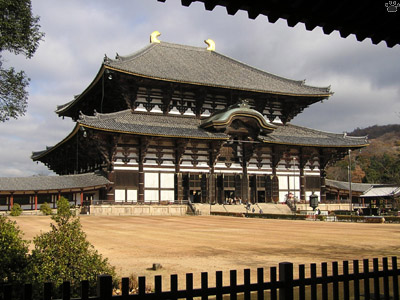
Main pavilion of Todai-ji temple - the world's largest wooden building. Nara, Honshu.Part 11. Nara
Nara, a small town not far from Kyoto, was the first permanent capital of Japan (in 710-794). It is even better preserved than Kyoto, and small enough to explore in less than a day.
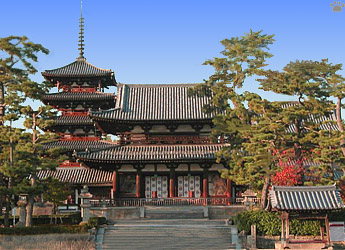
Horyu-ji temple, near Nara - the world's oldest wooden building (607-615). |
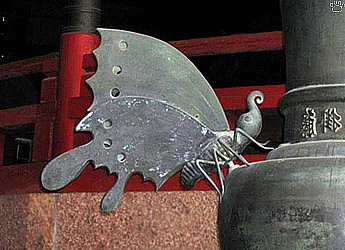
Detail, Todai-ji temple, Nara. |
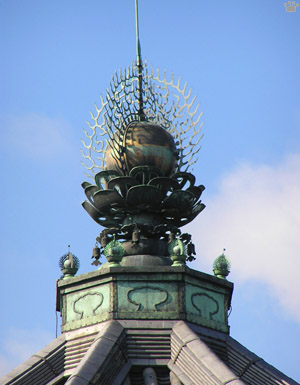
Pagoda top, Kofuku-ji temple, Nara. |
Nara has both the world's oldest and the world's largest wooden buildings. The giant main hall of Todai-ji temple used to be even larger - the existing one is a 1709 copy of an older original, which was larger by 1/3. It houses the Great Buddha (right).
|
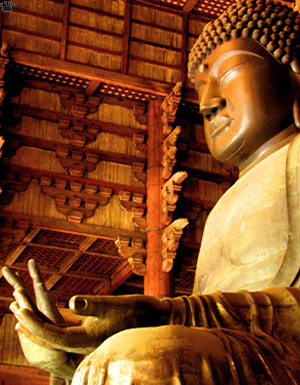
15 m-tall Daibitsu (the Great Buddha), Todai-ji temple, Nara. |
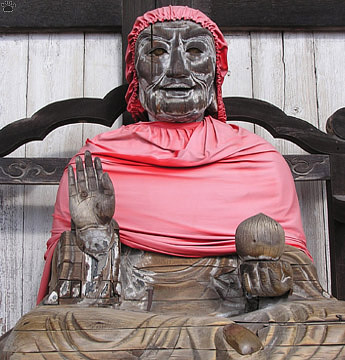 |
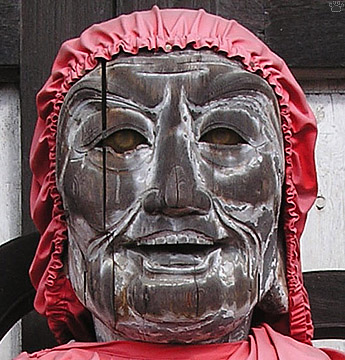 |
| Wooden statue, Todai-ji temple, Nara. |
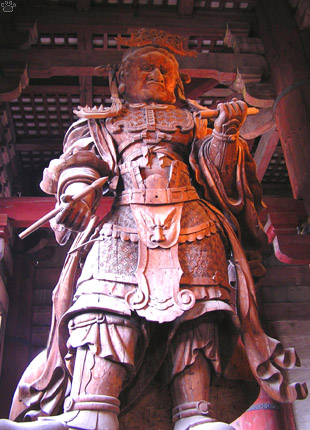
Statue, Todai-ji temple, Nara. |
Nara is a popular place, but in early mornings there are more deer than people in its streets. As you walk uphill from the station, the city gradually turns into a large park, and then a beautiful hill forest.
|
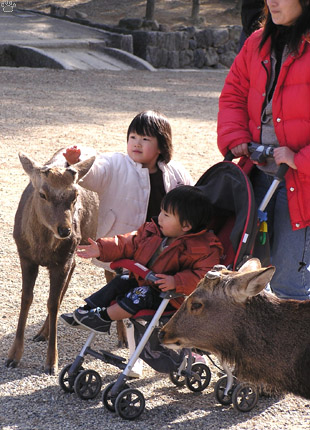
Street scene, Nara. |
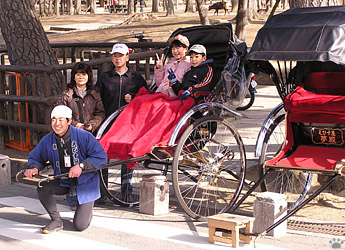
Tourist family taking a rickshaw ride, Nara. |
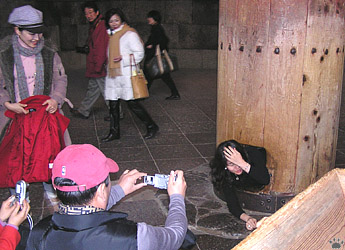
You can achieve enlightenment if you squeeze through this hole. Todai-ji, Nara. |
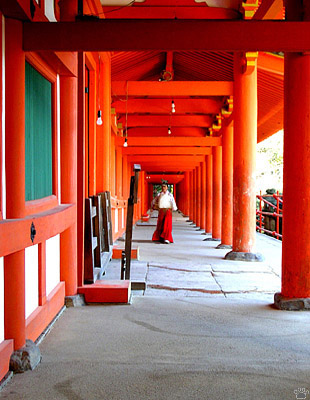
Kasuga-taisha shrine, Nara. |
Inside the park are a few Shinto shrines, including the large, colorful Kasuga Taisha, founded in 820. One of the most popular shrines in Japan, it used to be rebuilt every 20 years until 1898.
|
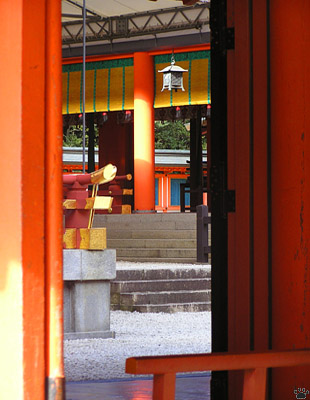
Inside Kasuga-taisha shrine, Nara. |
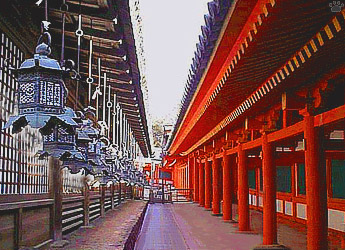
Kasuga-taisha shrine, Nara. |
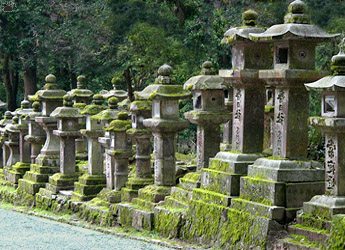
Stone lanterns, Kasuga-taisha shrine, Nara. |

Little shrine, Kasuga-yama Primeval Forest, Nara. |
If you walk past the shrines, you find yourself in Kasuga-yama Primeval Forest. It is one of the last low-elevation old-growth forests in Japan and a UNESCO World Heritage Site, but few people seem to know about this reserve. |
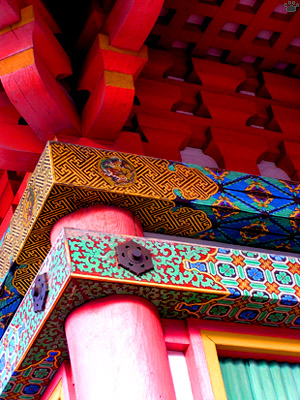
Detail, Wakamiya-jinja shrine, Nara. |
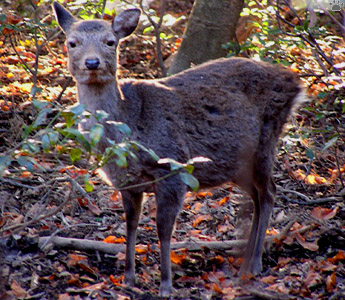
Sika deer (Cervus nippon) in sunlight, Kasuga-yama, Nara. |
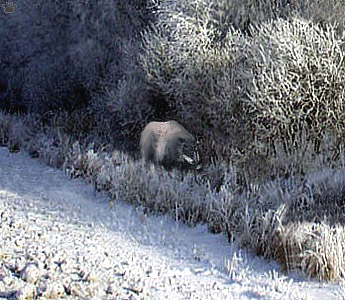
Wild boar (Sus scrofa), Kasuga-yama, Nara. |
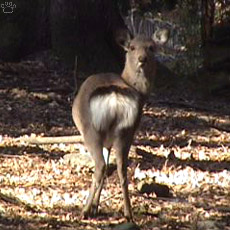
Sika deer, Kasuga-yama, Nara. |
There is very little undergrowth in the forest, so you can easily walk around. Once you get away from the shrines, you can see non-feral shika (sika deer), risu (Japanese squirrel), nocturnal musasabi (Japanese giant flying squirrel), smaller and also nocturnal momonga (Japanese flying squirrel), itachi (Siberian weasel, see previous pages) and, if you climb higher and are very quiet, inoshishi (wild boar).
|
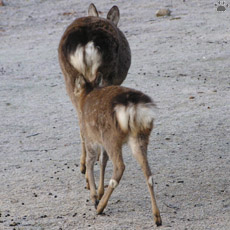
Sika deer, Nara-Koen park, Nara. |
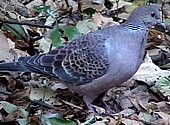 |
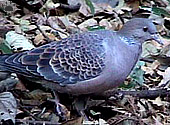 |
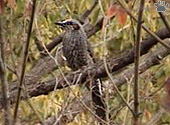 |
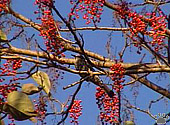 |
| Oriental turtle-dove (Streptopelia orientalis), Nara-koen park, Nara. |
Brown-eared bulbul (Ixos amaurotis), Nara-koen park, Nara. |
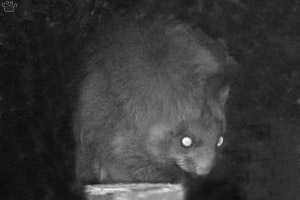
Japanese giant flying squirrel (Petaurista leucogenys), Kasuga-yama, Nara. |
Nara is probably the easiest place to see the giant flying squirrel, up to a meter long and capable of glides of up to 180 m.
|

Japanese giant flying squirrel, Kasuga-yama, Nara. |
 |
 |
 |
 |
 |
| Common winter birds of Japanese lowland forests, left to right: brambling (Fringilla montifringilla), Oriental greenfinch (Carduelis sinica), gray starling (Sturnus cineraceus), bull-headed shrike (Lanius bucephalus), black-faced bunting (Emberiza spodocephala). Nara area, Honshu. |
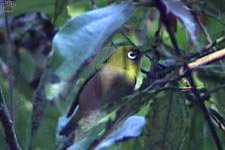
Japanese white-eye (Zosterops japonicus),
Kasuga-yama, Nara. |
Even in winter, lowland forests and parks of Honshu are full of birds. The one you hear the most is noisy hiyodori (brown-eared bulbul), common even in big cities. There's also a lot of gara (titmice), tsugumi (thrushes), mukudori (starlings), gera (woodpeckers), and others. |
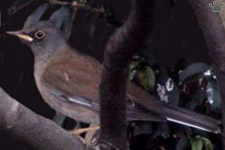
Pale thrush (Turdus pallidus),
Kasuga-yama, Nara. |

Road to Kasuga-taisha shrine, Nara. |
Part 12: Kyushu
Back to Part 10 Home
|